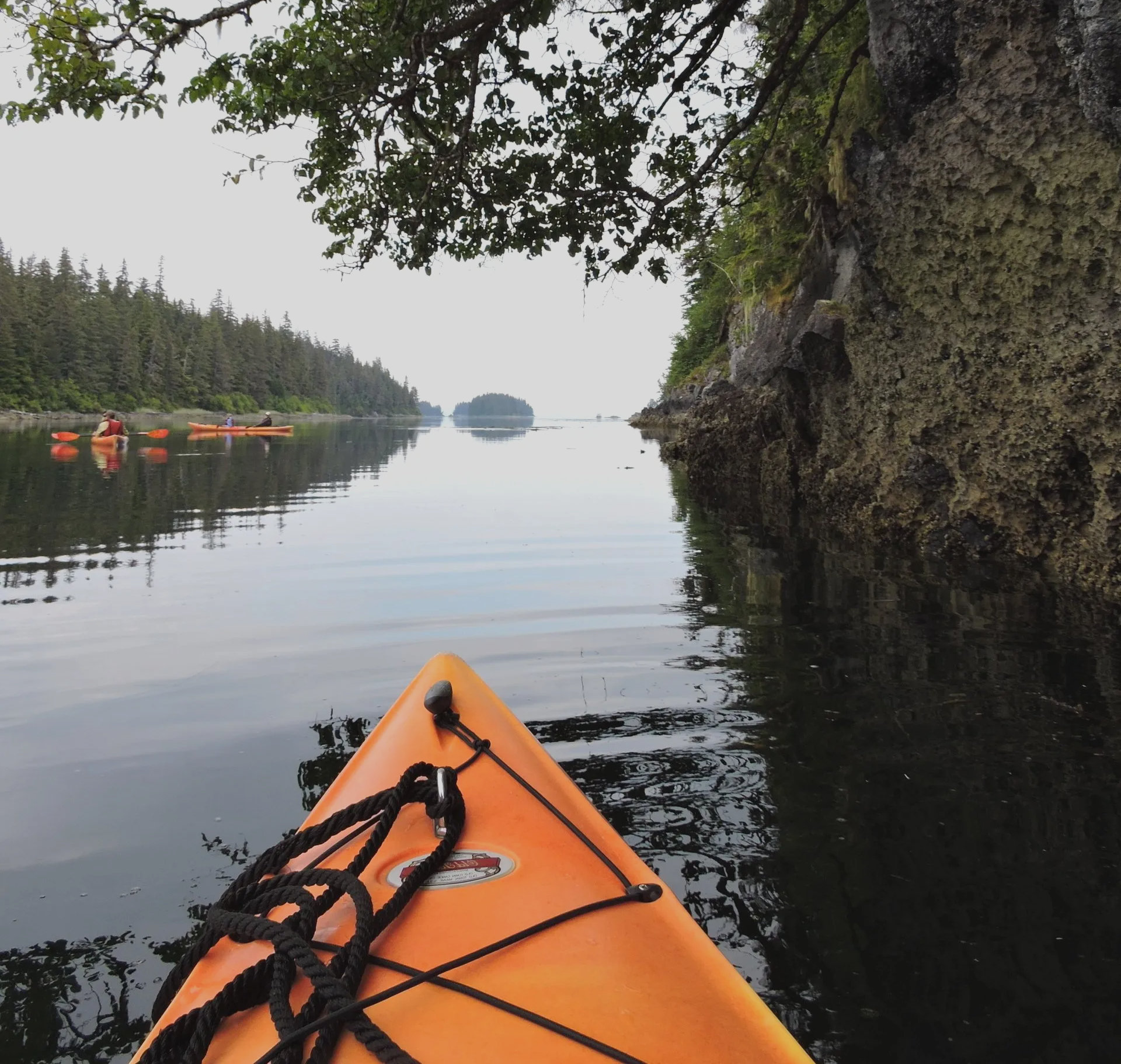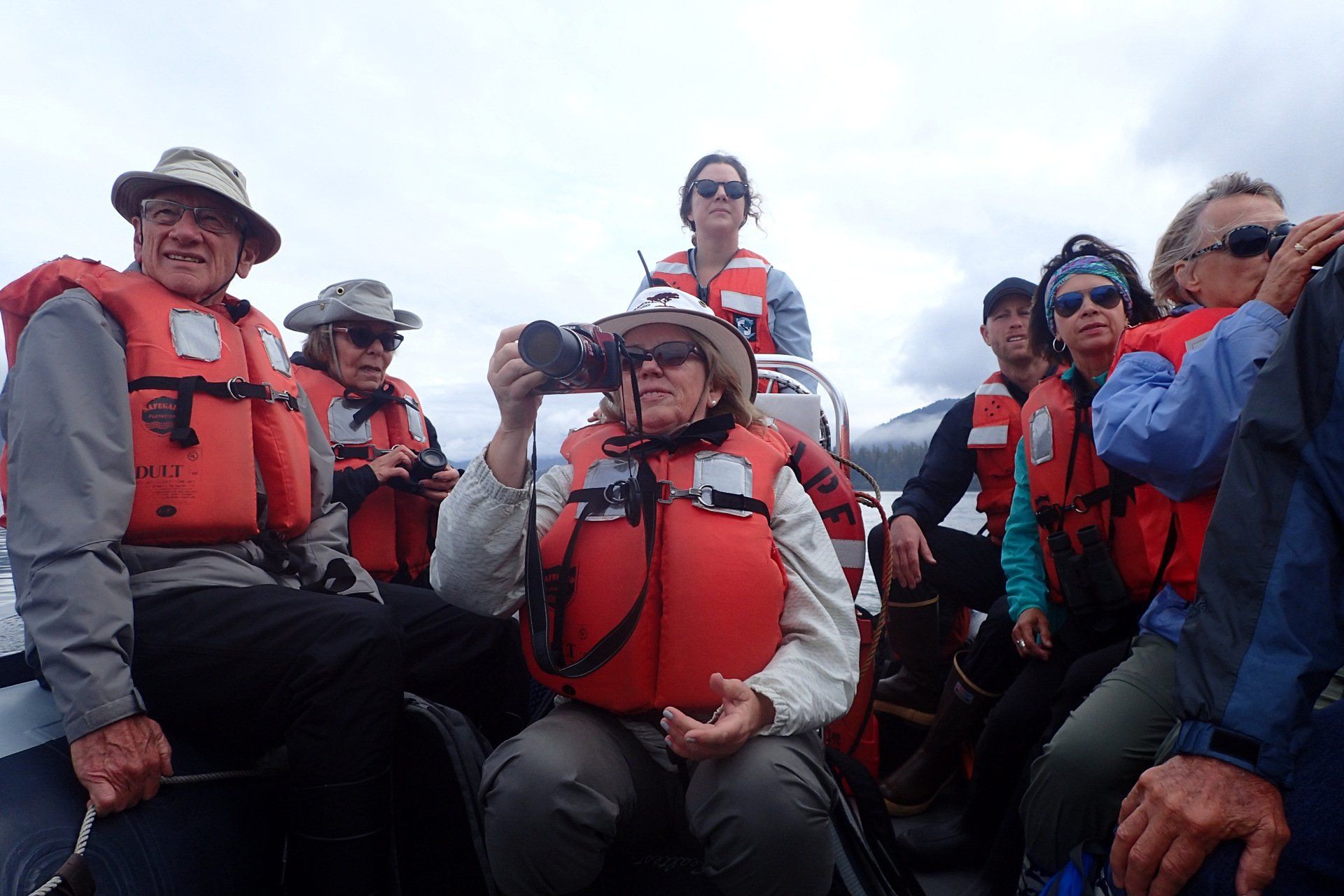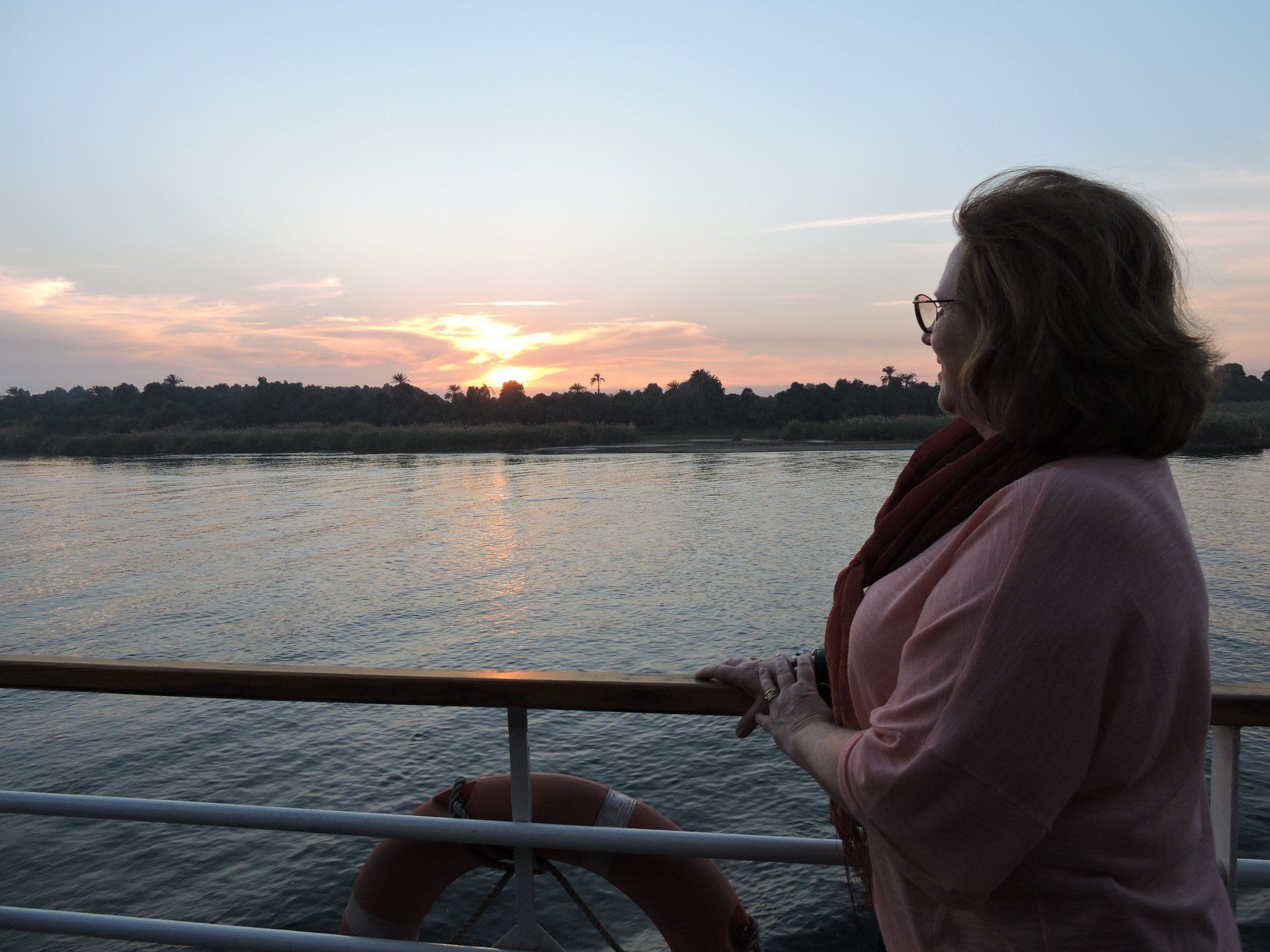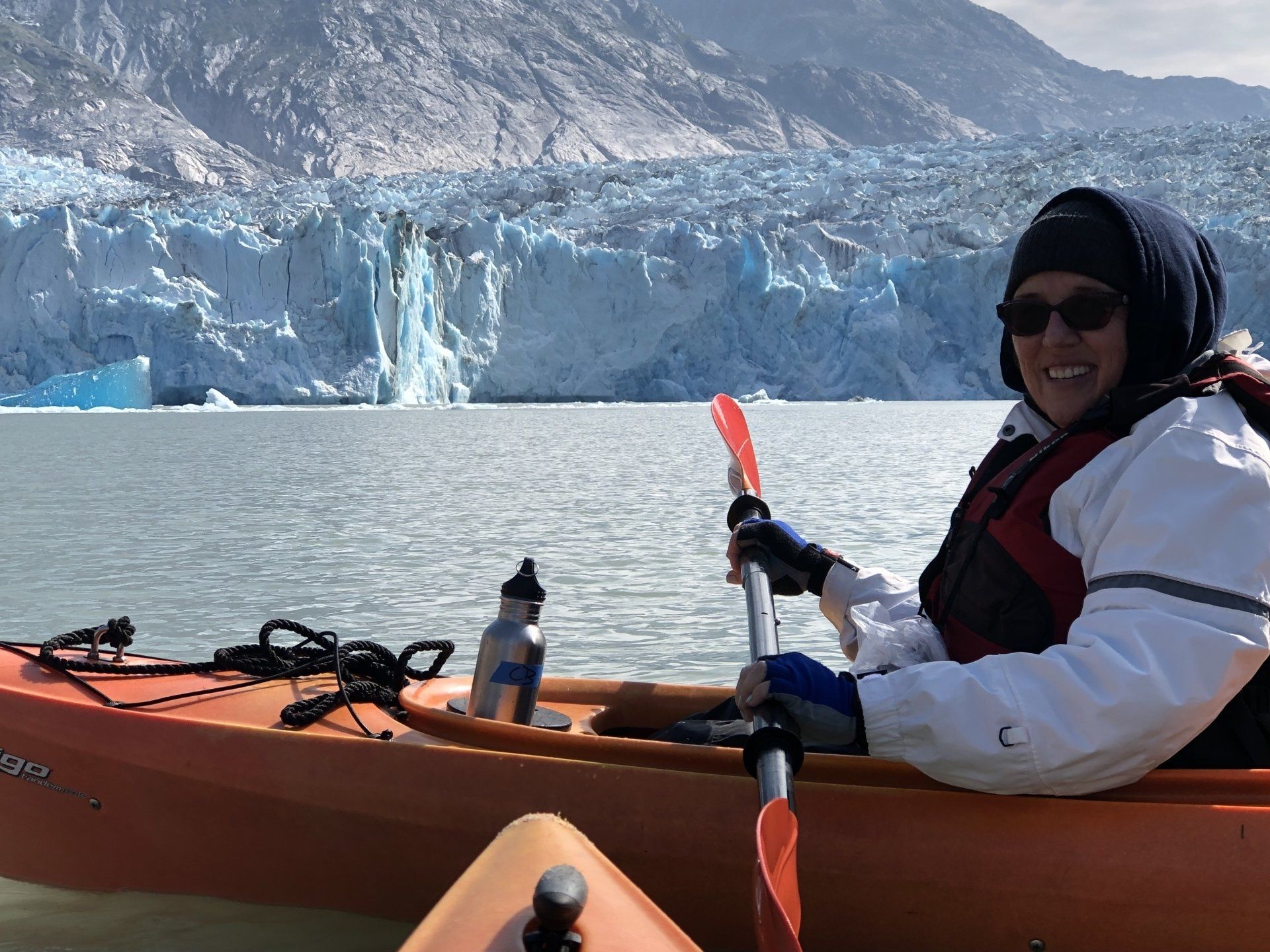SMALL SHIP ADVENTURES
Small, maneuverable vessels and an unhurried pace
create experiences previously not even dreamed about!
Small Ships – BIG experiences!
Up close and personal, hands-on small ship cruises invite wildlife, culture and history to take center stage.
Venture into remote untouched wilderness as early explorers once did: aboard a small eco-friendly ship, slipping in and out of sheltered inlets and hidden coves, eagerly awaiting what is around the next bend.
Small ship and expedition cruises are all about discovery, challenge, adventure, learning and, of course your rejuvenation. What makes these journeys unique is the emphasis on wildlife encounters, the natural environment, historical sites, and informative talks and lectures. On these sustainable ships and yachts you will enjoy a camaraderie with your fellow passengers that cannot be found on larger vessels.
Cruising on a small ship is the perfect way to explore iconic places and off-the-beaten track waterways, narrow channels and tiny ports without overwhelming the local communities. Flexible itineraries allow time to watch for whales or feel the icy spray from the waterfall on your face. After all, glaciers do not “calve” on demand!
- About Expedition Cruising
Expedition ships normally carry around 100 passengers and their itineraries are often novel, remote or just plain exciting. These ships are usually informal, so there is no need to pack that dinner jacket or little black dress. This leaves space for waterproofs and rubber boots, which are needed for those “wet landings” and hikes on muddy ground.
As many of the ships are quite compact, some cabins are on the small size. Most have bathrooms en-suite and there is a small desk and a chair. Cabins on higher decks are a little larger and therefore more expensive. Remember that the most stable part of a ship is in the middle and near the water line!
Most of the ships have dining rooms capable of taking everybody at a single sitting. Even though you may be in remote places the food is often excellent and the wine lists on some ships are exceptional!
The majority of the ships operate an open bridge policy to enable you to watch the captain or first officer plotting the ship’s course or navigating between icebergs.
Wildlife watching is an essential part of many of these cruises and if a large whale is spotted the ship may well divert for closer views. The decks on the ships have many areas where you can stand and just watch the scenery and wildlife pass by.
Specialist crew
One of the key elements of any voyage is the high standard of staff. With a very experienced ship crew and team of specialist expedition staff on board, you will be rewarded with a comprehensive series of informative and entertaining talks and lectures on subjects such as the natural environment, geology, bird watching, wildlife, regional history and culture. They are experts in their field, often actively involved in current and contemporary research and are keen to share their knowledge with you.
Shore Excursions
When near land and ice, plan to spend as much time as possible maximizing your experience by participating in several daily outings by Zodiac. Some of these excursions will be land based, with the opportunity to discover the amazingly diverse flora and fauna of the area; others will be water-based exploration, perhaps cruising amongst icebergs or along coastlines, marvelling at the marine life and dramatic landscapes around you.
The ships’ daily itineraries are based around making landings, which may result in meals being served early or late on occasions so that you can visit particular areas.
All of the excursions are included in your tour price.
How much time do we spend ashore?
That depends on the weather and constraints of time and distance. Depending on the voyage, you may spend several days aboard the ship, followed by a series of landings, each several hours long. On some voyages you land two or three times every day.
We would like to show you as much as possible but leave it up to you to skip an excursion.
Flexible itineraries
The actual program will vary to take best advantage of local conditions, spontaneous opportunities and wildlife. Mother Nature’s mood is rarely stable, and never predictable. The weather will change, ice conditions will vary, and as such every tour will be different. To take account of the variance in the global regions, all itineraries are flexible to enable us to make the most of your experience.
- Is it for me?
Expedition cruising is the favorite pastime of adventure seekers and people who like to be in touch with nature. Couples, singles and families – expedition cruises are for everybody willing to go a little over the edge and experience the freedom from the confines of everyday life. If you are expecting a band and dancing girls each evening then these cruises are not what you are looking for!
Solo Travellers
One of the worries regarding travelling on your own is the additional cost of taking a single room or cabin. If you want to save the single supplement, many ships will endeavour to find someone to share with you. However, if you do require a cabin for sole use then you should specify this at the time of booking and the single supplement will be charged. Please note that these cabins are sometimes limited in numbers, so early booking is essential.
How fit should I be?
You must be in good general health and should be able to climb 2-3 flights of stairs. The cruise is ship-based and physically not very demanding. Although we spend as much time as possible ashore, you are welcome to remain aboard the ship if you like.
To join most excursions, you must be able to get up and down the steep gangway from the ship to the water level to board the Zodiacs. Staff will assist you in and out of the boats. Ashore it can be slippery and rocky.
Remember that you are travelling in remote areas without access to sophisticated medical facilities, so you must not join this expedition if you have a grave medical condition.
What is the age range aboard
Passengers on a typical voyage range from their 30s to their 80s. Expeditions attract independent-minded travellers from around the world, who all show a strong interest in exploring remote regions. The camaraderie and spirit that develops aboard is an important part of the experience. Many departures have several nationalities on board.
What do I pack?
Active travellers typically own most of the clothing items necessary for a small ship cruise. When packing, don’t weigh yourself down with too many clothes or too much gear. Select informal, practical attire for your trip that can be worn in layers.
- Why book a Small Ship voyage with TRAVELBOECKER ADVENTURES?
This is not a one-size-fit-all journey!
Having experienced many small ship cruises herself – in the Arctic, Alaska, the Mediterranean, Galápagos… – travel expert Christine Boecker can provide you with first-hand, in-depth knowledge of the destinations and to match you with the best itinerary on the most suitable vessel for you.
“Twenty years from now you will be more disappointed by the things you didn’t do than by the ones you did do. So throw off the bowlines, sail away from the safe harbour.
Catch the trade winds in your sails. Explore. Dream. Discover.” –Mark Twain
Polar Bears, Puffins & Fjords
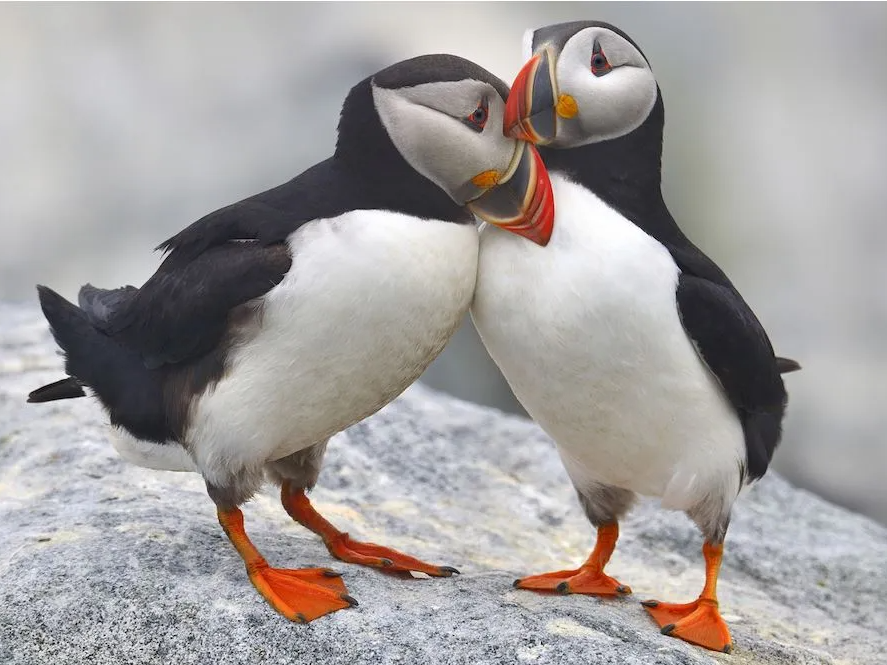
From ship or shore, the natural landscapes of the Canadian Arctic are astounding. Peregrinating through the super-natural waters north of the Arctic Circle is an extraordinary experience, as one comes face to face with Polar Bears - the King of the North, gargantuan ice floes that are both savage and tranquil, the overpowering sound of calving glaciers and cathedral-size icebergs dwarfing everything around them.
Inuit guides share insight into northern traditions through visual storytelling and cultural display. Historians lead educational presentations and field visits to historical sites, including locations associated with Sir John Franklin’s ill-fated expedition.
- About Arctic Cruises
Whether you are navigating the fabled Northwest Passage, exploring Greenland’s coastline, or breaking through the polar icecap to the iconic North Pole – the Arctic is a place with a reputation for dramatic scenery and a rich history of polar exploration.
What makes an Arctic Cruise Expedition unique is the emphasis on wildlife encounters in majestic natural surroundings and historical sites, such as that of the doomed Franklin Expedition.
Only on a small expedition ship can you journey through the heart of the Canadian High Arctic and along Nunavut’s Baffin Island. Explore the hidden corners of the Canada’s east coast provinces of Newfoundland and Labrador’s Torngat Mountains.
During your Arctic expedition you will visit remote communities, showcasing Canadian Arctic and maritime culture. Marvel at wildlife – whales, walrus, muskox, arctic fox, and of course the king of the North, the majestic polar bear.
Contact Small Ship Cruise Specialist, Christine Boecker to choose the best Arctic cruise for you
- Itinerary Overviews
Canadian High Arctic
Experience life North of 60! Fly into the remote Canadian town of Resolute Bay on the 75th parallel – one of the most northern outposts in the Canadian Arctic – and you know that you’ve arrived in the High Arctic!
From the very first day you are immersed in the Arctic wilderness on these expeditions – the perfect blend of wildlife, history, culture and scenery. History is a key focus as you visit Royal Canadian Mounted Police (RCMP) outposts such as Grise Fjord, Craig Harbour and Dundas Harbour.
Along the ice floe edge encounter beluga and hopefully the mythical narwhal. Sightings of polar bear can be expected throughout the voyage.
Get in touch to reserve your spot.
The fabled Northwest Passage
A transit of the Northwest Passage is one of the world’s most iconic expedition voyages. It covers the full spectrum of Arctic scenery, culture, history and wildlife – making it a much-loved classic.
Follow in the footsteps of the early Arctic explorers such as Franklin, Amundsen and Larsen, exploring the vast archipelago of islands and channels that create Canada’s High Arctic region.
This is the home of the polar bear, the grizzly bear, musk ox, caribou and walrus. Your ship becomes a floating wilderness lodge from where to take daily shore excursions to wildlife locations, historic points of interest and Inuit communities.
Eventually sail across the Davis Strait leaving Canada making landfall on the west coast of Greenland. Huge icebergs greet you on arrival along with friendly locals found in the colorful coastal fishing communities.
An iconic journey, the Northwest Passage remains an adventure today!
Baffin Island – Jewel of the High Arctic
Canada’s Baffin Island is one of the last great wilderness regions on the planet, featuring deep fjords, soaring mountains and immense glacial systems. Be on the lookout for a variety of Arctic birdlife and marine wildlife – including the iconic polar bear.
Visits to remote Inuit communities provide a fascinating glimpse into the daily life of the people who call this wilderness their home. The history of early exploration is ever present as you visit former Hudson’s Bay Company locations and Royal Canadian Mounted Police (RCMP) outposts.
Labrador & Torngat Mountains
Journey from the more temperate climate found in the Maritimes, northwards along Canada’s East Coast and into the higher Arctic latitudes.
The voyage links numerous historic locations along the coast, including a known Viking settlement, a French-built fortress and several remote Moravian mission locations. Encounter the Nunatsiavut people in small communities and isolated fishing ports along Labrador’s coastline.
A particular highlight is a visit to Torngat Mountains National Park – home to the highest mountains in Canada, east of the Rockies. This dramatic wilderness is one of the jewels in the crown of the Canadian National Park network.
Canada’s East Coast Provinces
The islands of Canada’s Atlantic Maritime provinces are well known for their Celtic traditions and feature a rich and diverse culture found in small communities and remote fishing ports.
Historically one of the most fascinating places in North America, the music and cuisine of Newfoundland and Labrador is celebrated the world over. The waters here are rich feeding grounds and act as a magnet for wildlife.
Daily shore excursions with expert guides explore areas otherwise inaccessible to access by land – an ideal way to experience this enchanting corner of Canada.
Contact Small Ship Cruise Specialist, Christine Boecker to choose the best Arctic cruise for you
- Environmental Commitment
While travelling through these ecologically sensitive areas we always find ways to give back to the places and people we visit, as we take away so many incredible memories.
For instance, the environmental impact is minimized by using clean burning fuel with a low emission factor. By carefully planning the itinerary, fuel consumption and emissions are reduced. Menus are planned to take advantage of local products where possible, and garbage is kept onboard for safe disposal in port.
Contact Small Ship Cruise Specialist, Christine Boecker to choose the best Arctic cruise for you
- The Franklin Expedition
Franklin’s fabled Arctic ships found
The story the ill-fated expedition by Sir John Franklin from the mid-18th century and the enduring mystery of their fate has gripped the imagination and intrigue of explorers and history lovers for more than 150 years.
Franklin made his last heroic foray into the Arctic in 1845 with two ships and 128 men, never to be heard from again. Franklin’s crew became locked in the ice during a doomed search for the Northwest Passage to the Pacific Ocean. All crew members eventually died, though there’s evidence to suggest some may have survived for several years.
Many searches throughout the 19th century attempted to find the lost ships, but the mystery of what happened to Sir John Franklin and his men had never been solved. Inuit testimony from the late 1840’s claimed one ship sank in deep water west of King William Island.
A new chapter in history was written in 2014 when a Canadian expedition located the final resting place of one of Franklin’s ‘lost ships,’ HMS Erebus in the frigid waters of the Victoria Strait. The second vessel, HMS Terror was located two years later.
“The beauty of where they found the wreck is proof positive of Inuit oral history,” said CBC chief correspondent Peter Mansbridge, who had covered the Franklin search for many years.
“The Inuit have said for generations that one of their hunters saw a ship in that part of the passage, abandoned and ended up wrecking…. It’s exactly where they said it was.”
More at BBC News
Contact Small Ship Cruise Specialist, Christine Boecker to choose the best Arctic cruise for you
Icebergs, Penguins & Whales

Antarctica, the most pristine, awe-inspiring, wildlife-rich destination on our planet will take your breath away and renew your senses. It is one of the most profound and life- changing journeys you could ever experience.
The most isolated continent on earth is as fascinating as it gets. Amazing wildlife – watch humpback whales feed just a few feet away, 100 000 penguins bustling about, sunbathing elephant seals and albatrosses following boats – all thriving in this frigid, perilous grandeur.
Waters studded with towering blue icebergs rising hundreds of feet out of the water, groaning glaciers calving into the sea and soaring volcanoes rising majestically from the icy waters.
- Antarctica Expeditions
Falkland Islands – South Georgia – Antarctic Peninsula
Few places compare to South Georgia and the Falklands when it comes to exotic wildlife and jaw-dropping scenery. On this voyage you can enjoy both, visiting the world’s largest black-browed albatross colony while also seeing some of the biggest breeding spots for king penguins and elephant seals on earth – along with day after day of amazing polar scenery.
This journey will introduce you to at least 6 species of penguin and a whole lot of Antarctic fur seals. For avid birders there will be at least one expedition guide to share their expert knowledge and to help you identify and photograph the birds that you see.
(OE1)
Active in Antarctica
The Antarctic Peninsula Basecamp expedition offers you a myriad of ways to explore and enjoy Antarctica. This alpine environment offers great opportunities to scout the region on foot, by zodiac or by kayak, allowing you to hike, snowshoe, go mountaineering, and even camp out under the Southern Polar skies.
(OE2)
Emperor Penguins by Helicopter
A true expedition, our Weddell Sea cruise sets out to explore the range of the Emperor Penguins near Snow Hill Island and see a variety of other birds and penguins including Adélies and Gentoos. The thrilling helicopter flights make this search possible, enabling you to land in locations otherwise inaccessible.
Contact Small Ship Cruise Specialist, Christine Boecker if polar wildlife is on your list
(OE3)
- Environmental Commitment
Our ultimate goal, while travelling through these ecologically sensitive areas, is to protect the polar regions
- by promoting polar awareness and protecting the wildlife
- by waste reduction & removal
- by using clean burning fuel and reducing fuel consumption where possible
- and by assisting scientific research
Because, while these areas are too good not to share, they are also too precious not to protect.
Contact Small Ship Cruise Specialist, Christine Boecker if polar wildlife is on your list
Seals, Penguins & Glaciers
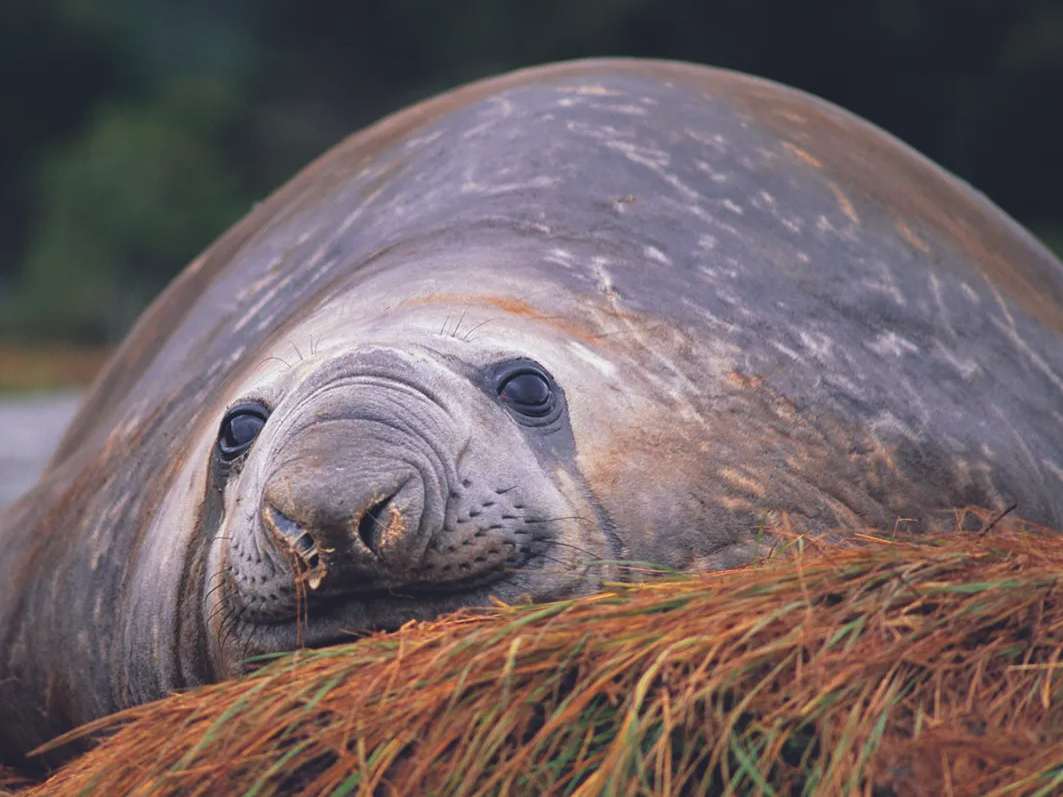
Explore the Patagonian fjords on an expedition cruise, navigating the South American channels of Tierra del Fuego, the Straits of Magellan, the Beagle Channel and Cape Horn.
Follow in the footsteps of Magellan, Drake and Darwin as you hike secluded beaches, listen to groaning glaciers, explore the lush sub-polar forest, discover elephant seals, penguins and other native creatures.
Enjoy shore excursions by zodiac to access remote bays and shallow waters; hear lectures by experts on the fauna, geography, glaciology, ethnography and history of the region; focus on photography, do some whale watching and visit King Penguin colonies.
- Cruise Highlights
Day 1: Punta Arenas, Chile
Day 2: Ainsworth Bay – Tuckers Islets/Brookes Glacier
Day 3: Pia Glacier – Glacier Alley
Day 4: Cape Horn – Wulaia Bay
Day 5: Ushuaia, Argentina
This voyage is also offered in reverse and can be combined with a visit to Torres del Paine National Park to explore the Torres Massif, Lago Grey and Grey Glacier on guided walks, hikes and by horseback.
Contact Small Ship Cruise Specialist, Christine Boecker to get onboard
(AU)
- Itinerary Overview
Day 1 Depart Punta Arenas
After boarding, a welcome toast and introduction of captain and crew, the ship departs and during the night we cross the Strait of Magellan and enter the Whiteside Canal between Darwin Island and Isla Grande de Tierra del Fuego.
Day 2 Ainsworth Bay & Tuckers Islets
By dawn the ship is sailing up Admiralty Sound, a spectacular offshoot of the Strait of Magellan that stretches nearly halfway across Tierra del Fuego. The snowcapped peaks of Karukinka Natural Park stretch along the north side of the sound, while the south shore is defined by the deep fjords and broad bays of Alberto de Agostini National Park.
We go ashore at Ainsworth Bay, which harbors copious bird life and a colony of southern elephant seals which can sometimes be spotted from the Zodiacs.
Continue west along the sound to the Tucker Islets (seasonal). After lunch, we board the Zodiacs again for a close-up view of the Magellan penguins. More than 4,000 penguins use Tucker as a place to nest, give birth and nurture their chicks.
Day 3 Pia Glacier & Glacier Alley
Continue around the western end of Tierra del Fuego and enter the Beagle Channel. By morning we are entering Pia Fjord and boarding the Zodiacs for a shore excursion to Pia Glacier. After disembarking we take a short hike for a view of the spectacular glacier, or choose a longer walk up a lateral moraine of the old Pia Glacier.
Then sail east through an area called Glacier Alley. Living up to its name, the passage features a number of impressive tidewater glaciers flowing down from the Darwin Mountains and Darwin Ice Sheet.
Day 4 Wulaia Bay & Cape Horn
In the early morning we navigate the narrow Murray Channel and drop anchor at historic Wulaia Bay, one of the few places in the archipelago where the human history is just as compelling as the natural environment.
Originally the site of one of the region’s largest Yámana aboriginal settlements, the bay was described by Charles Darwin and sketched by Captain FitzRoy in the 1830s during their voyages on the HMS Beagle. After a visit to the museum in the old radio station you have a choice of three hikes, again depending on your fitness level. On all of these you will be strolling through an enchanted Magellan forest of lengas, coigües, canelos, ferns, and other endemic fauna to reach a panoramic viewpoint overlooking the bay.
In the afternoon we cruise across Nassau Bay into the remote archipelago that includes Cape Horn National Park. Weather and sea conditions permitting, we shall go ashore on the windswept island that harbors legendary Cape Horn (Cabo de Hornos), a sheer 425-meter (1,394-foot) high rocky promontory overlooking the turbulent waters of the Drake Passage. The Chilean navy maintains a permanent lighthouse on the island, staffed by a lightkeeper and his family, as well as the tiny Stella Maris Chapel and modern Cape Horn Monument.
Day 5 Ushuaia
The following morning we sail into Argentine waters and dock in Ushuaia, the world’s southernmost city. Ushuaia which was founded in 1884 and was one of the original points of contact between the indigenous Yámana and European cultures.
With around 65,000 inhabitants, Ushuaia is the second largest city in Tierra del Fuego and is surrounded by the Southernmost Andes peaks. Among its highlights is the maritime museum housed inside a former penitentiary. The city is also good for shopping – especially locally made chocolate – or hanging out in its many cafes.
Contact Small Ship Cruise Specialist, Christine Boecker to get onboard
(AU)
- About Patagonia
At the end of the world lies more than just beauty: glaciers, majestic mountains, turquoise lakes and gauchos dot this mythical land. Patagonia’s dramatic landscapes are a feast for the eyes, either on dry land, or through fjords and glaciers.
For centuries, explorers arrived in Patagonia believing that they had reached the gates of the unknown Terra Australis, a legendary continent located at the extreme southern end of the world. Just like then, Patagonia remains largely unknown and wild, and practically uninhabited. It is distinguished by its jagged mountain peaks and majestic glaciers, pristine rivers, turquoise lakes, and fjords, and is blessed with an abundance of wildlife on land and in the waters of these dramatic straits.
Among the wildlife species most often encountered are elephant seals, Andean condors, and penguins. Humpback whales, dolphins and sea lions are common marine mammals, with the most elusive being the fearsome leopard seal. Birdlife is rich and varied, from the iconic Albatross, Kelp Goose and Caracara falcon to the little Magellan and majestic King Penguins.
Fabled Cape Horn sits on a windswept island just above the Drake Passage, where turbulent waters from the Atlantic and Pacific oceans converge. It was declared a UNESCO World Biosphere Reserve and in 2016 celebrated the 400th anniversary of its discovery by Dutch mariners searching for a new route to Asia.
History
Patagonia was occupied around 8000 years ago by semi-nomadic hunter-gatherers. The Kawésqar or Alakalufes, the Aónikenk or Patagones, the Sélknam and the Yaganes all co-existed and adapted to the harsh living conditions, incorporating rich religious and artistic expression. Of these ethnic groups, only a few dozen descendants still survive.
Today the main settlements are Puerto Natales and Punta Arenas, which was founded in 1848 as a penal colony.
At the end of the nineteenth century large sheep ranches were established on the expansive pampa, fueled by the demand for wool by the British textile industry. Many Estancias remain today, home to the Gaucho who is responsible for the tasks on the ranch. An expert rider, he is also skilled in the use of the Boleadoras, a weapon composed of rocks joined by lines of leather used by the ancient Tehuelches.
In 1520, Magellan lead the first western expedition to the south of Latin America. This Portuguese explorer discovered a natural passage that connected the Atlantic and Pacific oceans. The Strait of Magellan became the most important route between the two oceans.
Cape Horn, the southernmost tip of South America, was discovered in 1616 by Jacob Le Maire, a Dutch businessman and explorer searching for an alternative to the Strait of Magellan and looking to establish a commercial route to Asia. In addition to its famous Albatross Monument, the island harbors a lighthouse, chapel and wooden walkways across a landscape with many rare and unusual plants.
The Cape remains a maritime legend to this day, as sailing around this remote point and then through the Drake Passage was (and is) one of the most challenging nautical routes on the planet. The violent stretch of chaotic water between Antarctica and South America, frequented by icebergs, huge waves and plagued by gale-force winds, is crossed by sailors with great trepidation. Many still prefer to use the sheltered Strait of Magellan.
Le Maire was followed by Alexander von Humboldt, a German naturalist in 1799, then by Robert Fitz Roy and Charles Darwin in 1831, both English scientists and most recently the Irish explorer Ernest Shackleton in the early 20th century.
Contact Small Ship Cruise Specialist, Christine Boecker to get onboard
TESTIMONIALS

“Antarctica was an incredible experience. We were mesmerized. Every day was a new adventure. It really is indescribable – like being on a different planet. I'm so happy I did it!”
Gary, Delta BC

“Our 8-day boat trip of the Galapagos was incredible. The recommended boat and cabin was wonderful with great food, a wonderful guide and a daily schedule full of wonders and joy.”
David, Vancouver BC

“Just returned from the Galapagos where, thanks to Christine, my husband and I had an AMAZING time. Our cruise on the luxury catamaran was beyond our expectations.”
Jennifer, West Vancouver BC
Christine's Alaska Expedition:
(Video 8 mins)
Christine's Arctic Expedition:
(Video 13 mins)
TRΛVELBOECKER ΛDVENTURES Insider’s Reports:
GET IN TOUCH
TRΛVELBOECKER TΛILOR-MΛDE
Unique Safaris designed to meet your Personal Vision
OVERVIEW
CONTACT
LOCATION
Vancouver BC
Canada
Div. of PTM Ltd. | BC Reg #2806
© TRΛVELBOECKER ΛDVENTURES 2002 - 2022


